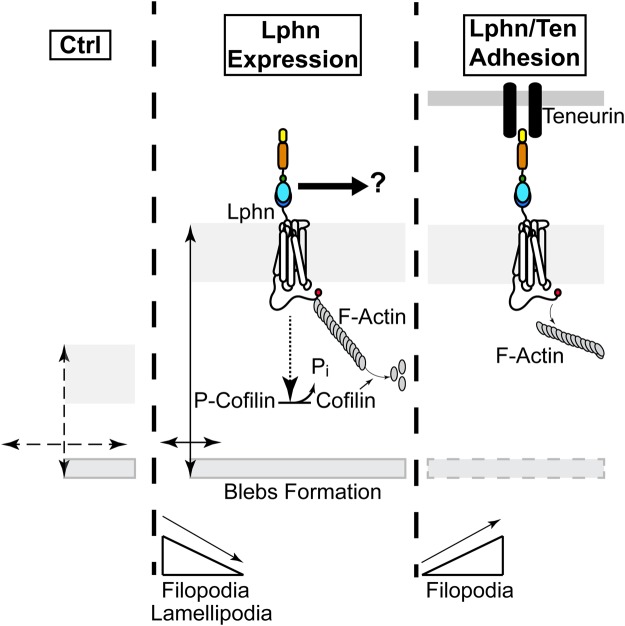Fig. 5.
Schematic representation depicting the effect of Lphns on morphological changes and actin remodeling in HEK293T cells. Cell membrane expression of Lphn induces an increase in cell volume while decreasing cell-matrix surface contact as compared with control conditions (double-ended arrows). These changes in cell volume are accompanied by a transition in the formation of cell extensions composed of F-actin, such that cells harbor less filopodia and lamellipodia to the benefit of bleb formation, which is normally absent in naive HEK293T cells. The destabilization of F-actin induced by Lphn is corroborated by a constitutive activation of the cofilin pathway. The presence of a physical complex between Lphn and the actin cytoskeleton parallels these effects. The adhesion motif-containing N-terminal domains of Lphn are suspected to interact with a yet unknown molecular pathway to modulate cell and nuclei dimensions. Intercellular adhesion mediated by Lphn and teneurin provoke a net rescue of filopodia while decreasing the Lphn colocalization with the actin cytoskeleton.

